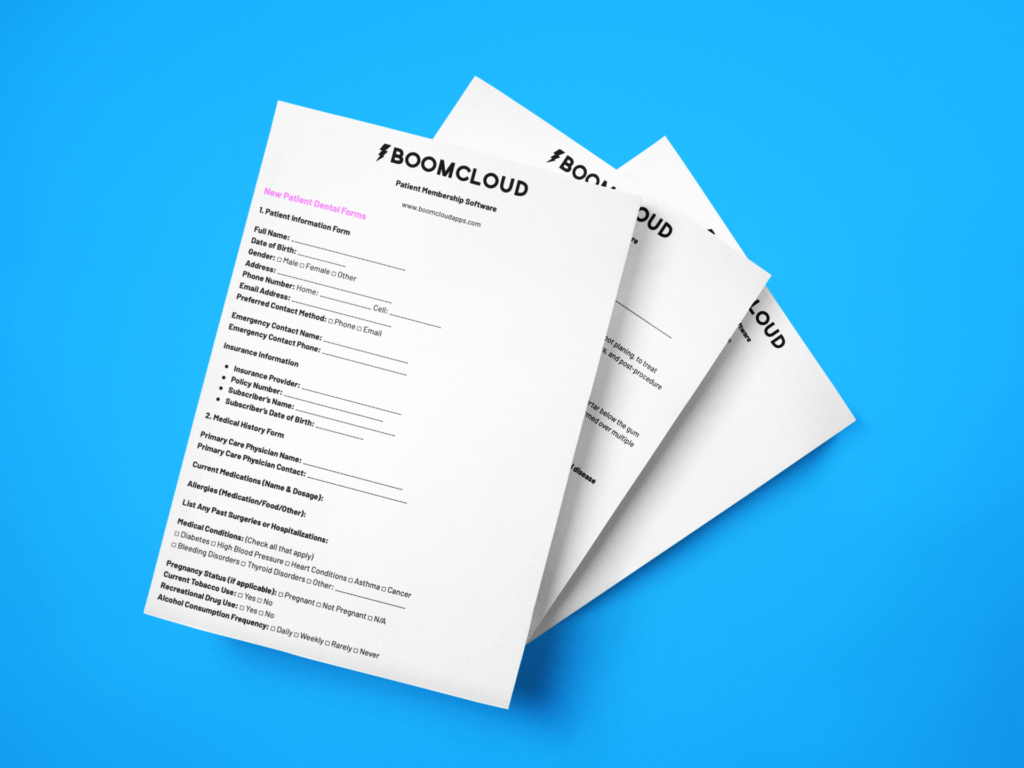Download The Unfinished Dental Treatment Letter Template from our dental scripts, templates & forms library!
Introduction to Unfinished Dental Treatment Letter
Communication with patients about ongoing or unfinished treatments is an essential component of running a successful dental practice. An unfinished dental treatment letter acts as a gentle nudge for patients, reminding them of the importance of completing their recommended dental work. It’s not just about filling chairs; it’s about prioritizing patient health and fostering long-term relationships.
What Is an Unfinished Dental Treatment Letter?
Simply put, an unfinished dental treatment letter is a form of communication, either in print or digital, aimed at encouraging patients to complete their partially finished dental work. It serves as a reminder that unfinished treatments could lead to potential oral health issues. These letters must strike a balance between being informative and compassionate.
The Importance of a Follow-Up Letter for Unfinished Dental Treatment
Benefits of Sending Follow-Up Letters
Sending a follow-up letter is a proactive step that benefits both the dental practice and the patient. For the patient, it emphasizes the importance of oral health, while for the practice, it enhances retention rates and minimizes the number of incomplete cases. Studies show that regular follow-ups can improve patient satisfaction and encourage them to prioritize their dental care.
How It Impacts Your Practice
When dental practitioners invest time in effective follow-up communication, they often notice a positive impact on their practice’s revenue and reputation. Patients feel cared for and valued, making them more likely to complete treatment and recommend the practice to others. Moreover, the reminder letter keeps the practice top of mind for patients who may have been hesitant or forgetful.
Why Patients Leave Dental Treatment Unfinished
Understanding the reasons behind unfinished dental treatment can guide how you structure your follow-up letters. The tone and content should directly address these issues, making your communication more effective.
Common Reasons
Financial concerns are one of the most cited reasons why patients don’t complete their dental treatments. Whether it’s the cost of treatment or lack of insurance, affordability can be a major roadblock. Additionally, some patients experience anxiety or fear, causing them to delay or avoid visits altogether. Others may have a misconception about the urgency of completing their dental care, believing they can afford to wait.
Crafting an Effective Unfinished Dental Treatment Letter
Tone and Language to Use
The language of the letter should be friendly yet professional. Avoid being overly formal, as this could create a sense of distance. Instead, opt for a compassionate tone that shows understanding. Use phrases like “We care about your health” or “Completing your treatment can prevent future issues” to highlight your genuine concern.
Key Elements of a Follow-Up Letter
- Personalized Salutation: Address the patient by name.
- Reminder of Treatment Details: Clearly state what treatment remains unfinished and why it’s important.
- Emphasize Benefits: Focus on the health benefits of completing the treatment rather than the consequences of delaying.
- Provide Solutions: Offer options for scheduling or financial assistance.
- Call to Action: End the letter with a clear next step, such as “Call us today to schedule your appointment.”
Download The Unfinished Dental Treatment Letter Template from our dental scripts, templates & forms library!
Personalization in Your Dental Letters
Why Personalization Matters
Personalized communication demonstrates that you value each patient as an individual rather than just a number. Addressing specific concerns or referencing past conversations can make a significant difference in how the message is received. For instance, if a patient previously expressed financial worries, you might include information about payment plans.
How to Personalize Without Overstepping
While personalization is important, there’s a fine line between being thoughtful and invasive. Ensure that your references to a patient’s history or concerns are relevant and professional. Avoid making assumptions or comments that could make a patient uncomfortable.
How to Address Patient Concerns in the Letter
Patients may feel overwhelmed or stressed about their unfinished treatments, so it’s important to address these concerns head-on. Offering solutions or alternatives can alleviate some of this stress.
Offering Payment Solutions
One way to encourage patients to return is by presenting flexible payment plans or financing options. If your practice offers discounts or in-house payment arrangements, be sure to mention these in the letter.
Addressing Dental Anxiety
Dental fear is another common barrier. In your letter, you could include reassurances about the comfort and care your team provides. Statements like “Our team is experienced in making your visit as relaxing as possible” can be reassuring.
Email vs. Physical Letters: Which Is More Effective?
Pros and Cons of Both Methods
- Email: Quick, cost-effective, and convenient but can end up in spam folders.
- Physical Letters: More personal and memorable but require more time and resources.
Depending on your patient demographic, you may find one method works better than the other. For older patients, a physical letter might feel more considerate, while younger patients often prefer digital communication.
Download The Unfinished Dental Treatment Letter Template from our dental scripts, templates & forms library!
FAQs on Unfinished Dental Treatment Letters
How often should follow-up letters be sent?
A consistent follow-up schedule is crucial, typically once every three months, but it can vary based on the patient’s needs.
What should I do if a patient doesn’t respond to follow-ups?
If a patient remains unresponsive, try reaching out through a different channel, like a phone call. Respect their decision if they still do not respond.
Is it okay to use urgency in these letters?
Yes, but be mindful. Create a sense of importance without causing unnecessary alarm.
Can I automate the process of sending letters?
Yes, using digital tools to automate follow-ups can save time while ensuring HIPAA compliance.
How can I measure the success of my follow-up efforts?
Track metrics such as appointment bookings, response rates, and completed treatments.
Should I address financial concerns directly in the letter?
Absolutely. Providing information on payment options can make it easier for patients to consider returning.
Conclusion
Crafting an unfinished dental treatment letter is about more than just reminding patients to return. It’s a strategic, compassionate approach to patient care that prioritizes their well-being while also benefiting your practice. By understanding the nuances of effective communication, you can re-engage patients and help them achieve better oral health.
Links:
- American Dental Association (ADA) Resources on Dental Health: Visit the ADA website for resources on oralhealth care.
- Payment and Financing Options for Patients: Explore dental financing solutions at CareCredit.
- Information on HIPAA Compliance: Get more details on HIPAA regulations from the U.S. Department of Health& Human Services.
These resources will help both dentists and patients navigate unfinished dental treatments, manage concerns effectively, and improve overall communication.
Download The Unfinished Dental Treatment Letter Template from our dental scripts, templates & forms library!











